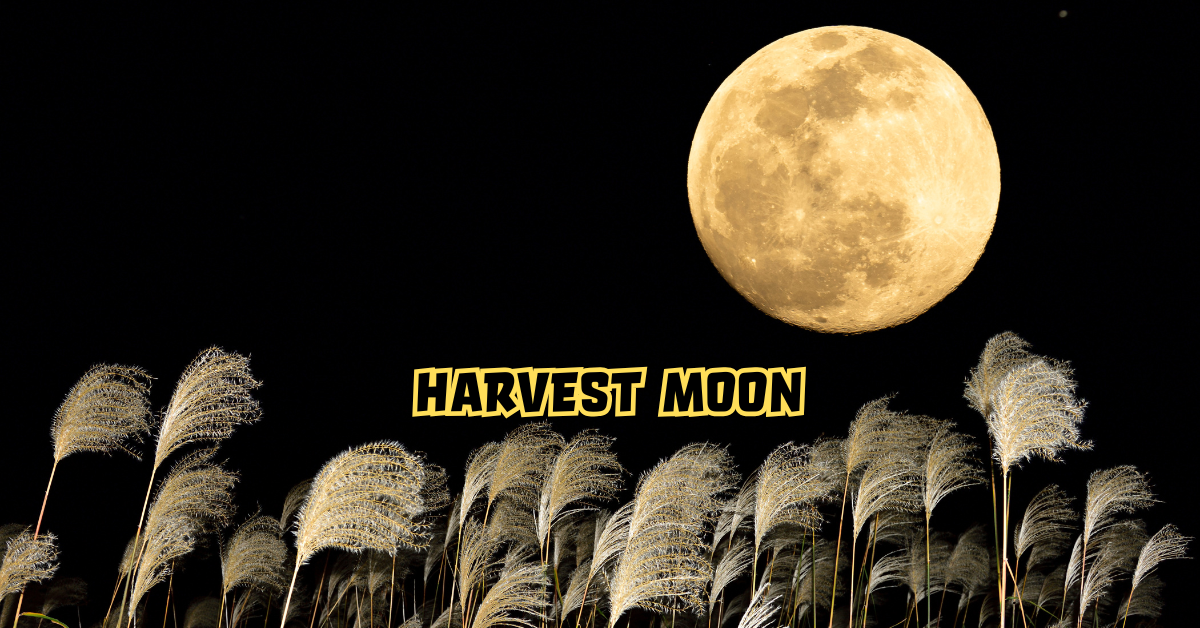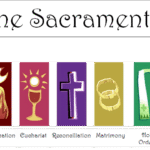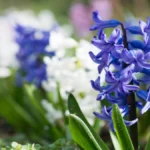The Harvest Moon is one of the most captivating celestial events that bridge the beauty of the night sky with the rhythms of human life. Appearing as the full moon nearest to the autumnal equinox, it has long served as both a scientific marvel and a poetic symbol of renewal, abundance, and change. For centuries, farmers, astronomers, and dreamers have looked to the Harvest Moon as a sign — a moment when the heavens illuminate the fields below, offering both practical light for harvest and spiritual reflection for humankind.
In modern times, the Harvest Moon has evolved into more than a seasonal event; it’s a global symbol of gratitude, preparation, and transition. As the Earth tilts and the days grow shorter, this moon rises with a distinct glow — often deeper, richer, and more golden than other full moons. Its brilliance lingers longer after sunset, granting farmers in earlier times extra light to complete their harvest before winter’s arrival.
Yet beyond its agricultural importance, the Harvest Moon holds cultural, emotional, and astronomical weight. It has been celebrated in art, mythology, and folklore around the world. From the Chinese Mid-Autumn Festival to Native American lunar traditions, it represents unity, reflection, and the cyclical balance of life. In an era of artificial light and fast-paced living, the Harvest Moon remains a reminder of our eternal bond with nature — a connection that transcends borders and centuries.
The Science Behind the Harvest Moon
The Harvest Moon isn’t just a poetic name; it’s a precise astronomical event. It is defined as the full moon that occurs nearest to the autumnal equinox, which usually falls around September 22 or 23. Unlike other full moons, which rise approximately 50 minutes later each night, the Harvest Moon rises only about 25 to 30 minutes later in the Northern Hemisphere.
This phenomenon occurs because of the moon’s orbital path relative to Earth’s tilt. During the equinox, the moon’s path makes a shallower angle with the horizon, causing successive moonrises to occur closer in time. This results in a series of bright evenings — a gift to farmers of the past who relied on natural light to gather crops late into the night.
The moon’s color also plays a role in its allure. The Harvest Moon often appears orange or red as it hovers low on the horizon. This hue isn’t mystical — it’s caused by the Rayleigh scattering of light, the same principle that gives sunsets their warm tones.
Table 1: Key Astronomical Characteristics of the Harvest Moon
| Feature | Description | Significance |
|---|---|---|
| Timing | Closest full moon to the autumn equinox | Marks the transition from summer to fall |
| Rising Interval | 25-30 minutes later each night | Provides extended moonlight for harvesting |
| Color | Golden to orange hue | Due to atmospheric light scattering |
| Hemisphere Visibility | Best viewed in Northern Hemisphere | Prominent in rural and agricultural regions |
| Orbital Effect | Shallow lunar path near horizon | Creates consistent early moonrises |
The Harvest Moon and Agriculture
Historically, the Harvest Moon was a farmer’s ally. Before the age of mechanized agriculture and artificial illumination, farmers depended heavily on lunar light. The consistent brightness of the Harvest Moon allowed them to work well into the evening, collecting crops like corn, barley, and pumpkins before the cold set in.
In many rural communities, the Harvest Moon wasn’t merely practical — it was spiritual. The full moon marked a time of celebration, gratitude, and hard-earned success. Villagers often held festivals, sharing food and dance under its radiant glow. The moon became a symbol of sustenance and cooperation, reminding people of nature’s generosity and the importance of timing in agriculture.
Even in today’s technologically advanced world, the Harvest Moon maintains its role as an agricultural marker. Farmers still observe lunar phases for planting and harvesting schedules, a testament to humanity’s ancient and continuing relationship with the cosmos.
Cultural and Historical Interpretations
The Harvest Moon’s symbolism varies across civilizations, but its themes of abundance, unity, and change remain universal. Ancient cultures revered the full moon as a divine messenger. To the Chinese, it represents family reunion and harmony — celebrated during the Mid-Autumn Festival, where mooncakes are shared under its glow.
In Native American traditions, each full moon carried a distinct name and meaning. The Harvest Moon often coincided with the “Corn Moon” or “Barley Moon,” signaling the time to gather and prepare for winter. Meanwhile, in European folklore, the Harvest Moon was seen as a celestial guardian — a light that protected farmers and ensured prosperity.
The moon also inspired countless artistic interpretations. Poets from John Keats to modern lyricists have written about its melancholy beauty. Painters captured its glow as a metaphor for fleeting time and cyclical rebirth. The Harvest Moon, in essence, represents a moment of balance — between light and dark, work and rest, effort and reward.
The Psychological and Emotional Impact
The Harvest Moon doesn’t only affect the physical world; it also influences human psychology. Studies in chronobiology suggest that moonlight can subtly impact sleep cycles and mood. The brightness of the Harvest Moon, often sustained over several nights, can increase nighttime alertness and evoke feelings of nostalgia or introspection.
Culturally, many associate the Harvest Moon with reflection and closure. It arrives as summer ends, inviting people to look back at what they’ve achieved and to prepare for colder, quieter months ahead. Its appearance embodies a balance — a reminder to pause, appreciate, and realign one’s priorities.
“The moon is a mirror of our own lives,” wrote an anonymous poet. “It waxes and wanes, yet it always returns — whole and shining.”
Table 2: Cultural Meanings of the Harvest Moon Around the World
| Region | Cultural Event | Symbolic Meaning | Traditions |
|---|---|---|---|
| China | Mid-Autumn Festival | Family unity and reunion | Sharing mooncakes, lantern festivals |
| Native America | Corn/Barley Moon | Gratitude and harvest | Feasts, storytelling |
| Japan | Tsukimi Festival | Appreciation of beauty | Offering rice dumplings, poetry |
| Europe | Harvest Celebrations | Prosperity and protection | Bonfires, folk music |
| Modern Western | Autumn reflection | Change and renewal | Meditation, photography, moonlit gatherings |
The Harvest Moon and Modern Life
In the digital era, the Harvest Moon continues to inspire global fascination. Every year, millions of people share photographs, organize moon-viewing parties, and reconnect with the rhythm of nature. Its appearance often trends across social media, reminding even urban dwellers of the quiet beauty of the night sky.
Astronomers use the event to engage the public in skywatching and scientific awareness. Schools and observatories host lunar nights where telescopes offer magnified views of the moon’s craters, maria, and shadows. Meanwhile, wellness movements have adopted the Harvest Moon as a symbol of mindfulness — encouraging people to align their personal cycles with natural ones.
From farmers to poets, scientists to seekers, the Harvest Moon continues to unite people across diverse walks of life. It is a living bridge between the measurable and the mystical.
Symbolism in Art and Literature
Artistic representations of the Harvest Moon span centuries. In the Romantic era, painters used its glow to convey solitude and longing, while in Eastern art, it symbolized serenity and wholeness. John Keats’s “To Autumn” immortalized its essence as both beautiful and transient — “Season of mists and mellow fruitfulness.”
Modern writers interpret the Harvest Moon as a metaphor for resilience. Its cyclical return mirrors human perseverance — an eternal rhythm of endings and new beginnings. In music, from Neil Young’s “Harvest Moon” to countless folk songs, the moon stands as a companion to human emotion — love, loss, and the quiet strength to begin again.
As one Japanese proverb says, “The moon does not fight. It only shines.” This encapsulates the calm, unwavering influence that the Harvest Moon exerts on human imagination.
Scientific Curiosities and Myths
Despite centuries of study, the Harvest Moon continues to spark fascination and myth. Many cultures once believed that full moons could affect behavior, tides, and even fertility. While modern science has clarified these as largely symbolic beliefs, the moon’s gravitational pull undeniably influences the Earth’s oceans and ecosystems.
Interestingly, the Harvest Moon is often accompanied by optical phenomena. Some observers report a “moon illusion,” where the moon appears larger when near the horizon. This isn’t due to actual size differences but to how our brains perceive spatial depth and distance.
Additionally, astronomers note that each year’s Harvest Moon can vary in brightness and size depending on its proximity to the Earth (perigee or apogee). This can occasionally coincide with a “supermoon,” enhancing its glow and size dramatically.
Environmental and Ecological Connections
The Harvest Moon has subtle effects on nocturnal wildlife and ecosystems. The increased moonlight influences the behavior of animals like owls, bats, and certain insects, often altering their feeding and migration patterns. Farmers and ecologists observe that crops, too, respond to lunar light, especially in traditional farming systems where moon phases still guide planting cycles.
As sustainability and ecological awareness grow, the Harvest Moon serves as a natural reminder of humanity’s relationship with Earth’s cycles. It represents timing, balance, and the wisdom of working with — not against — nature’s rhythms.
The Harvest Moon in a Changing Climate
In recent years, environmental observers have linked lunar phenomena to broader conversations about climate change and natural observation. The clarity and brightness of the Harvest Moon can vary with atmospheric conditions, including air pollution and weather instability. For many, watching the moon has become not just an aesthetic act but an ecological one — a way of staying attuned to the planet’s changing balance.
As urbanization expands and artificial lights dim celestial visibility, communities worldwide are advocating for “dark-sky preserves” to protect our ability to experience natural wonders like the Harvest Moon. Such initiatives remind us that preserving the night sky is as vital as protecting forests or oceans.
Spiritual and Philosophical Perspectives
Beyond science and culture, the Harvest Moon carries profound spiritual significance. It represents completion, reflection, and preparation for renewal. Many spiritual traditions view this period as ideal for letting go of past burdens and setting intentions for the future.
Meditative practices often use the Harvest Moon as a time to reconnect with gratitude — for the literal and metaphorical harvests in one’s life. It’s a cosmic invitation to pause and appreciate the fruits of one’s labor, much like the farmers who once worked by its glow.
“When the moon is full, our souls are full too,” wrote an ancient Taoist philosopher, capturing the timeless connection between celestial cycles and human consciousness.
Conclusion: The Eternal Light of the Harvest Moon
The Harvest Moon remains one of the most powerful symbols of continuity in an ever-changing world. Its glow carries both memory and meaning — illuminating the balance between human progress and natural rhythm. From ancient harvest fields to modern skylines, it continues to remind us that no matter how advanced we become, we remain children of the Earth and sky.
Every year, when the Harvest Moon rises, it invites humanity to pause and reflect — on effort, gratitude, and connection. It bridges the timeless dialogue between light and shadow, reminding us that renewal follows every ending.
As we look upward and witness its golden glow, we are reminded of something simple yet eternal: that beauty, like the moon itself, never truly fades — it only changes phase.
FAQs
1. What is the Harvest Moon?
The Harvest Moon is the full moon that occurs nearest to the autumnal equinox, providing extended evening light for farmers.
2. Why does the Harvest Moon look orange or red?
The warm hue occurs due to Rayleigh scattering, where the moon’s light passes through thicker layers of Earth’s atmosphere.
3. How is the Harvest Moon different from other full moons?
It rises earlier over several nights, giving more consistent light, unlike typical moons that rise about 50 minutes later each night.
4. What cultural traditions are linked to the Harvest Moon?
It is celebrated worldwide through festivals like China’s Mid-Autumn Festival and Japan’s Tsukimi, symbolizing unity and gratitude.
5. When can we see the Harvest Moon?
The Harvest Moon appears in September or early October, depending on the lunar calendar’s proximity to the autumn equinox.











